The Footballing Gods have finally delivered the showdown every football romantic has yearned for — Arsenal vs Real Madrid in the U Quarter-Finals. The first leg at the Emirates promises to be a footballing spectacle, with both sides brimming with individual brilliance and tactical depth. Let’s break it down first by setting the context and talking more about the Galanticos.
Real Madrid’s pedigree in Europe needs no introduction — the impossible has become their standard. This season has followed a similar narrative: resilience, individual brilliance, and an unshakeable belief that has defined their Champions League legacy.
Embodying the Champions League like no other, Los Blancos are 15-time winners. Their clutch mentality and sheer will to win have been embedded into every squad in recent years. Arsenal, in contrast, are hungry and determined, seeking their maiden title — a hunger that may just tip the emotional scales.
Under Carlo Ancelotti’s tutelage, Real Madrid generally line up a traditional 4-3-3 that morphs into a 1-4-3-3 during build-up. The #6 drops in between the centre-backs, while the #8s push higher, creating layers and vertical lanes through the middle of the pitch.
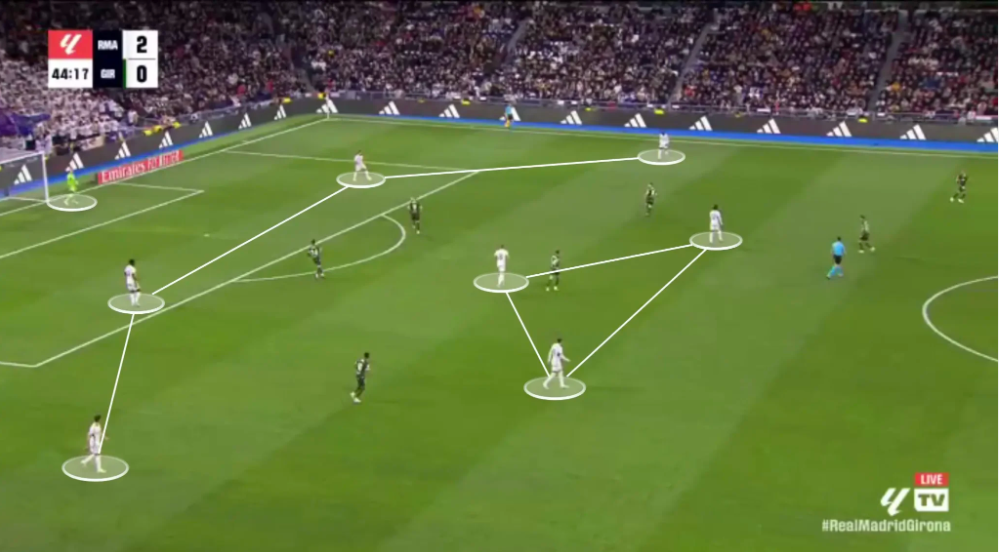
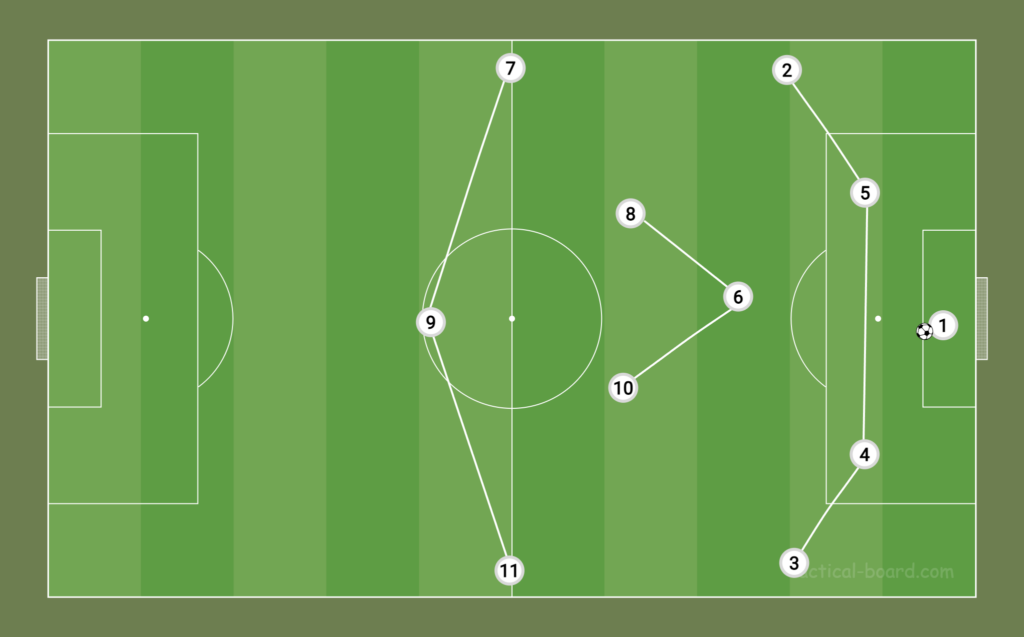
Image: 1-4-3-3 Build-up Shape
In Possession Dynamics
Real Madrid build from the back with composure. Midfielders drop to create numerical superiority, fullbacks push high and wide, while the wingers invert to occupy central pockets. This central access compresses the field, shortens passing lengths, and allows for quicker recoveries when pressed.
Madrid are extremely durable in possession and are comfortable shifting to a high line when facing a low block. This enables them to counter-press effectively, maintain territorial dominance, and dictate transitions. Their midfielders are the engine — both as creative outlets and pressing triggers.
They thrive on exploiting half-spaces, using sharp movements and intelligent rotations. Whether it’s threading passes into central pockets, isolating wide players like Vinícius or Rodrygo in 1v1s, or launching runs through the lines, their play is loaded with technical quality.

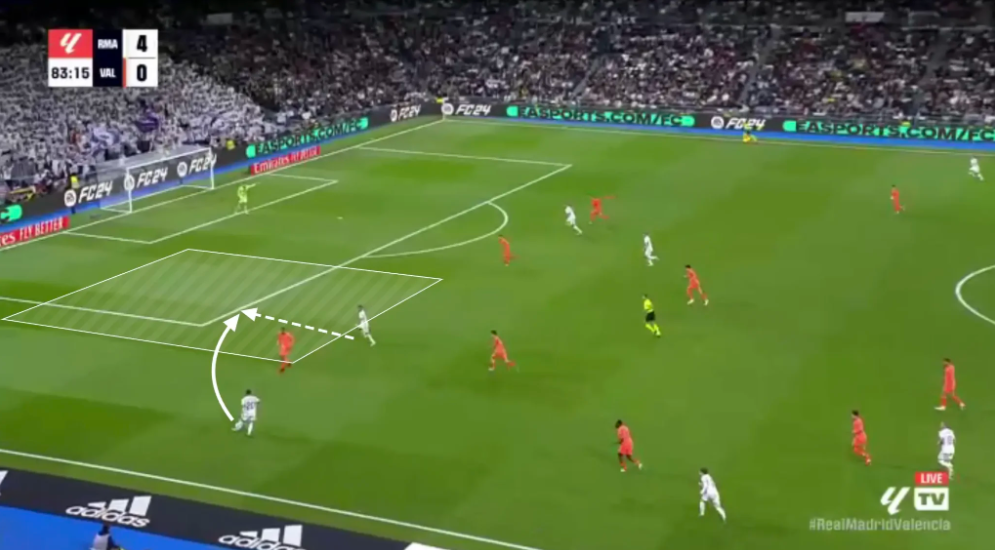
Image: Positional Play & Overload Patterns
Averaging 2.14 goals per 90, it’s not just down to individual quality — it’s a result of efficient movement. Overlapping runs into half-spaces, 2v1s on the flanks, and perfectly timed balls in behind create a constantly shifting attacking picture.
In conclusion, Madrid operate as a possession-based side, but can just as easily morph into a devastating transitional machine. Their build-up revolves around creating central overloads, intelligent rotations, and fluid spatial manipulation.
Out of Possession Dynamics
Madrid are aggressive and proactive in pressing from the front. Their compactness in possession allows for immediate counter-presses when the ball is lost — especially effective during man-to-man pressing.
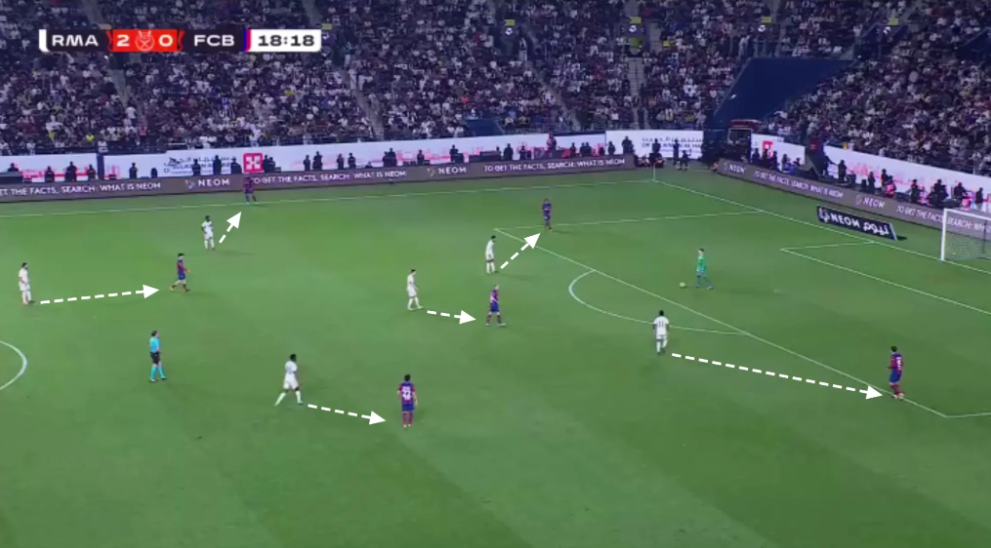
Image: OOP Setup vs Barcelona
Typically, they settle into a mid-block when out of possession, guiding opposition build-up into wide zones. The first line of pressure is tasked with disrupting passing rhythms and forcing hurried decisions.
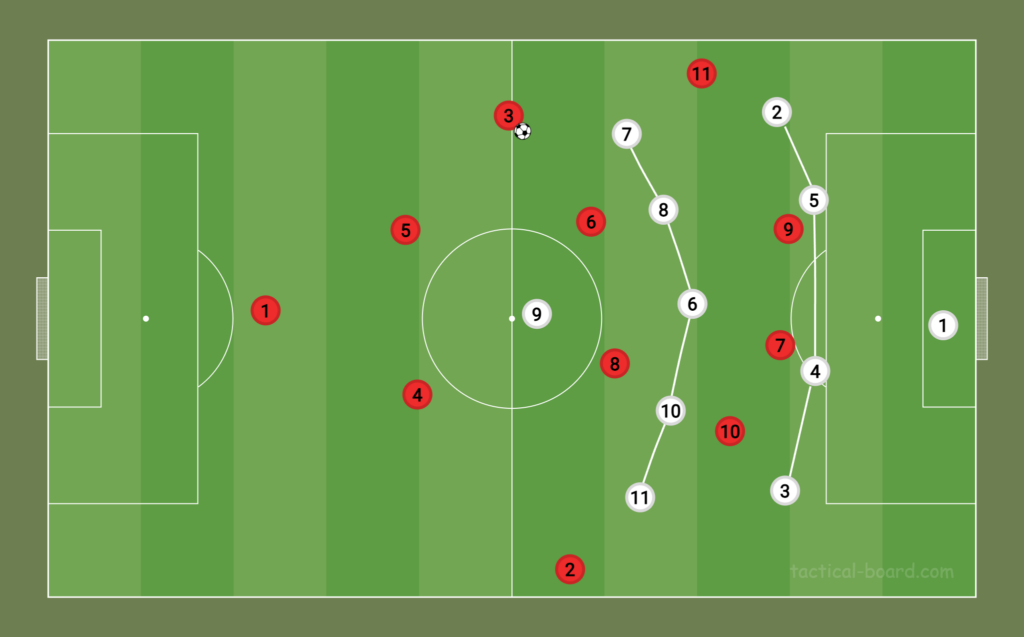
Image: 1-4-5-1 Defensive Shape
They minimize defensive transitions by keeping players close together centrally, which helps block passing lanes and encourages collective pressing. And when they win it? Few sides transition into attack as quickly or dangerously — switches from overloads to isolations, combination play in tight spaces, and an eye for the killer pass.
The main difference in approach between the two teams lies in tempo. Arsenal tend to be more methodical and fluid, progressing through the thirds with control. Madrid, meanwhile, can go from defence to attack in seconds — switching gears effortlessly to kill games off.
How Arsenal Can Take Advantage:
Arsenal are one of the smartest pressing sides in Europe — their ability to suffocate teams during the build-up can be their biggest strength. If they can force Ancelotti’s men to build from wider and deeper areas, it could lead to more long balls — and Madrid aren’t the most dominant side in winning aerial duels or second balls.
Winning first + second duels, especially in the midfield, is where Arsenal can tilt the balance. Their system thrives on aggressive pressing, man-marking, and tactical discipline — all elements that could restrict Madrid’s comfort zones.
Madrid’s wingers, especially Vinícius and Rodrygo, often stay wide during the early build-up phases. If Timber and MLS can hold their ground and mark them tightly, Arsenal can disrupt Madrid’s wide overloads. It’ll be a battle of elite dribblers against elite 1v1 defenders.
Tactically, Arsenal could set up to press like this:
– Merino pressing the CBs in whatever direction they choose to play, Ødegaard seconds his run covering the angles to their midfield pivot (RHS image)
– Partey at #6 man marks Bellingham and could push higher if he drops deeper
– Rice covers ground in negotiating the ball away from the #6/8’s
– Saliba stays put on Mbappe + Timber man marks Vinicius
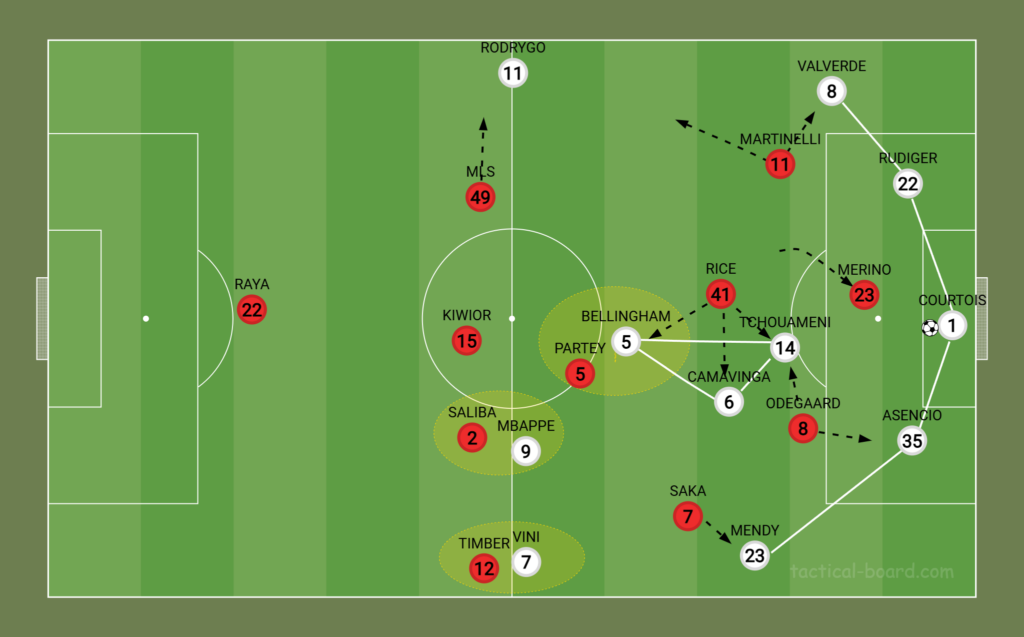
Pressing Structure (circles = markers, black arrows = pressing direction)
Arsenal are also elite at nullifying transitions. Their counter-pressing and ability to defend in the half-spaces is exceptional — this match will test that like never before. When not in possession, they can drop into a compact 4-4-2 block, restricting central progression.
Interestingly, Madrid have shown defensive vulnerabilities when forced into ball watch the midfield, block runners from wide or when facing quick combinations and rotations. Arsenal can exploit this with their trademark positional freedom — overlaps, underlaps, and sharp third-man runs in the final third could open up gaps.
Set-pieces are another key advantage. Madrid have conceded one of the most goals from corners in La Liga this season, while Arsenal have scored the most from corners in all of Europe – a clash of extremes. Arteta’s side averages nearly seven corners per game and scores over 16% of their headed chances. That’s a big weapon.
Madrid’s zonal marking approach from set-pieces can be targeted. With Arsenal’s delivery quality and aerial threat, exploiting those zones could be decisive. With Saka back and Rice’s usual delivery, it’ll be a threatening route to goal, but with Gabriel injured it will be a huge loss for the Gunners.
Madrid also conserve energy well and use their bench effectively to finish games. Arsenal must be cautious about game management — ensuring they don’t lose focus in crucial moments, as Madrid excel at punishing lapses.
Conclusion
Expect tactical inventiveness, brave football, and elite-level matchups. The clash of player profiles and managerial styles adds another layer of intrigue. Arsenal come into this with belief and boldness — and it’s exactly that bravery which must remain a constant over the two legs.
While an Ancelotti eyebrow raise might dismiss a setback, Arteta’s planning and hopeful in-game adjustments could turn this into a true chess match. Either way, we’re in for a classic.
Part 2 with key player dissections and battles will be out soon!

